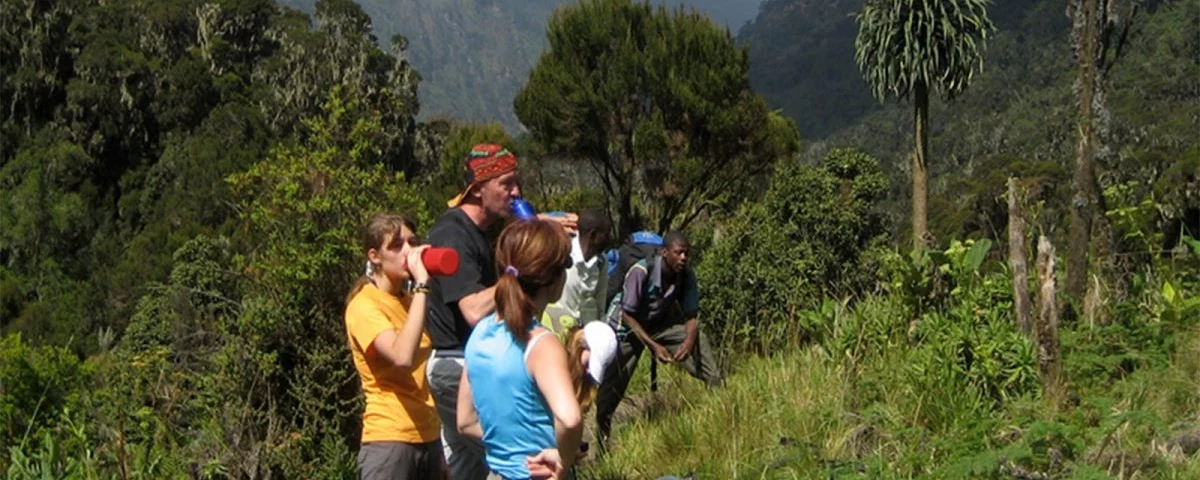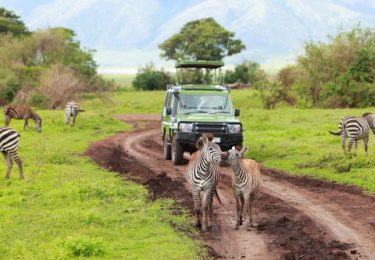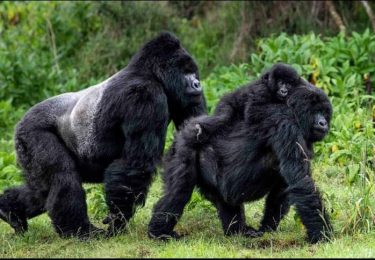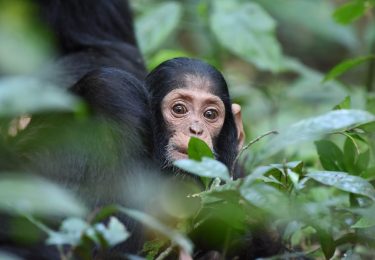- Home
- About Us
- Uganda safaris
- Long Safaris
- Short Safaris
- Day Short Safaris
- 1 Day Entebbe Botanical gardens weekend birding excursion
- I Day Entebbe City Tour
- 1 Day Jinja, Mabira, Ssezibwa Tour
- 1 Day Jinja Source of the Nile tour
- Lake Victoria Sunset Cruises
- 1 Day Kampala City Tour
- 1 Day Mabamba Shoebill Stork And Birding Tour
- 1 Day Makanaga Shoebill And Birding Trip
- 1 Day Ngamba Island Boat And Chimpanzee Excursion
- Other Tours
- Gorilla Safaris
- Uganda Gorilla safaris
- 4 Days Mgahinga Bwindi gorilla and golden monkey trekking safari
- 3 Days Mgahinga Gorilla trekking safari
- 5 Days Mgahinga Gorillas, Golden Monkey And Lake Bunyonyi Tour
- 5 Days Gorillas And Wildlife, L.Mburo, Bwindi and L. Bunyonyi
- 8 Days Wildlife, Gorillas, Golden Monkeys Trip
- 8 Days Gorillas Chimpanzee and wildlife Trekking Tour
- 9 Days Kidepo Valley National park and Bwindi Gorilla Safari. Wildlife and gorillas
- 11 Days Gorilla And Chimpanzee Tracking and wildlife Safari
- Rwanda Gorilla Safaris
- Uganda Gorilla safaris
- National Parks
- Kidepo Safaris
- Queen Elizabath Safaris
- Lake Mburo Safaris
- Mgahinga
- Mgahinga Gorilla National Park
- 3 Days Mgahinga Gorilla trekking safari
- 4 Days Mgahinga Bwindi gorilla and golden monkey trekking safari
- 5 Days Rwand-Uganda Gorilla, Golden Monkey trekking trip
- 5 Days Mgahinga Gorillas, Golden Monkey And Lake Bunyonyi Tour
- 8 Days Wildlife, Gorillas, Golden Monkeys Trip
- Other Safaris
- Home
- About Us
- Uganda safaris
- Long Safaris
- Short Safaris
- Day Short Safaris
- 1 Day Entebbe Botanical gardens weekend birding excursion
- I Day Entebbe City Tour
- 1 Day Jinja, Mabira, Ssezibwa Tour
- 1 Day Jinja Source of the Nile tour
- Lake Victoria Sunset Cruises
- 1 Day Kampala City Tour
- 1 Day Mabamba Shoebill Stork And Birding Tour
- 1 Day Makanaga Shoebill And Birding Trip
- 1 Day Ngamba Island Boat And Chimpanzee Excursion
- Other Tours
- Gorilla Safaris
- Uganda Gorilla safaris
- 4 Days Mgahinga Bwindi gorilla and golden monkey trekking safari
- 3 Days Mgahinga Gorilla trekking safari
- 5 Days Mgahinga Gorillas, Golden Monkey And Lake Bunyonyi Tour
- 5 Days Gorillas And Wildlife, L.Mburo, Bwindi and L. Bunyonyi
- 8 Days Wildlife, Gorillas, Golden Monkeys Trip
- 8 Days Gorillas Chimpanzee and wildlife Trekking Tour
- 9 Days Kidepo Valley National park and Bwindi Gorilla Safari. Wildlife and gorillas
- 11 Days Gorilla And Chimpanzee Tracking and wildlife Safari
- Rwanda Gorilla Safaris
- Uganda Gorilla safaris
- National Parks
- Kidepo Safaris
- Queen Elizabath Safaris
- Lake Mburo Safaris
- Mgahinga
- Mgahinga Gorilla National Park
- 3 Days Mgahinga Gorilla trekking safari
- 4 Days Mgahinga Bwindi gorilla and golden monkey trekking safari
- 5 Days Rwand-Uganda Gorilla, Golden Monkey trekking trip
- 5 Days Mgahinga Gorillas, Golden Monkey And Lake Bunyonyi Tour
- 8 Days Wildlife, Gorillas, Golden Monkeys Trip
- Other Safaris
MOUNT RWENZORI NATIONAL PARK

LAKE MBURO NATIONAL PARK
January 23, 2024CHIMPANZEES
January 23, 2024Also known as the Mystical challenge, Mount Rwenzori National Park is located in the southwestern part of Uganda, on Uganda’s border with Democratic Republic of Congo in districts of Bundibugyo, Kabarole and Kasese, covering an area of 995 square kilometers. It was established in 1991 to conserve its unique ecological system from growing human pressure but later on, it was declared a UNESCO world heritage site in 1994 because of its outstanding natural beauty. The park was later inscribed on UNESCO’s list of world heritage sites in danger between 1999 and 2004 because of the insecurity which was caused by rebels who used the deep forests as their cover. And in 2008, it was recognized as a Ramsar site.
The Mountains of the Moon consists of six distinct mountains which are permanently covered by snow and glaciers despite of them being situated a few miles from the Equator. They include; Mount Stanley which has the highest Margherita peak at an altitude of 5109 meters and its Africa’s third (3rd) highest peak, Mount Speke at an altitude of 4,890 meters which is Africa’s forth (4th) highest peak, Mount Baker at an altitude of 4843 and its Africa’s fifth (5th) highest peak, Mount Emin pasha, Mount Gessi and Mount Luigi da Savioa.
Mount Rwenzori National Park has got over 20 magnificent scenic lakes which can be seen while on a hike on the mountain and these lakes include; Lake Mahoma which is the most accessible among all and can be reached on by using the central circuit, Kitandara lakes and Lake Bujuku which lies at the apex of the deep, glacier-carved Bujuku valley in the shadow of Mount Stanley, Mount Baker and Mount Speke. The park also consists of glaciers, snow fields, waterfalls and it’s one of Africa’s most beautiful mountain areas with mountains higher than ALPS which are also ice-capped.
The park is noted for its botany which has been described as some of the most beautiful in the world. It has also got five distinct vegetation zones which change according to the changes in the altitude like moorland, colorful mosses, huge tree-heathers and bamboo. There is also unique flora in the glacier-carved valleys of the mountain which are triffids-sized forms of rare lobelia, groundsel, crish, heather and gnarled trees.
Rwenzori Mountains National Park hosts over 65 mammal species in the forest zone including; 6 Albertine rift endemic species, 3 rare and 4 species endemic to Mount Rwenzori as a national park. These animals include; elephant, buffalo, giant forest hog, hyrax bushbuck, Rwenzori otter, duiker and leopards. These animals are difficult to spot due to the dense forests. It has also got over 9 species of reptiles such as the three-horned chameleon, 6 species of amphibians, 15 species of butterflies and primates like chimpanzee, Angola black and white colobus, L’hoest monkey, blue monkey and more.
It is also an important birding area having over 217 recorded bird species including endemic Albertine rift species and 17 species endemic to the park which can be encountered in the forest zone of the park. The bird species in the park include; the Rwenzori Turaco, Long-eared Owl, Bearded Vulture, Golden-winged Sunbird, Cinnamon-chested Bee-eater, Black Eagles, Barred Long-tailed Cuckoo, Handsome Francolin, Archer’s Robin-chat, Rwenzori Batis, Landen’s Bush-shrike, Blue-headed Sunbird, Montane Sooty Boubou, Slender-billed Starling, Strange Weaver, White-starred Robin to mention a few.
What to do at Mount Rwenzori National Park
Mountain climbing
This is the main activity carried out at Mount Rwenzori National Park. Mount Rwenzori provides stunning views of the peaks, the beautiful vegetation and surroundings which are said to be some of the spectacular ones in the world. The mountain is very challenging therefore; one should be in good shape to do the hiking because it takes 7-9 days to reach the top and while hiking, you will follow two trails; the central circuit trail and the kilembe trail which lead you to the unique mysteries of the park. Day hikes can also be organized for those who don’t want to reach the mountain peaks.
Note: hiking on Mount Rwenzori is operated and arranged by the Rwenzori Mountain Service (RMS), an organization that works in conjunction with the Uganda Wildlife Authority. (UWA)
Bird watching
Mount Rwenzori national park is rich with birdlife; having over 217 bird species where by 17 of them can only be found here. These birds include; the Handsome Francolin, Archer’s Robin-chat, Rwenzori Batis, Landen’s Bush-shrike, Blue-headed Sunbird, Montane Sooty Boubou, Slender-billed Starling, Strange Weaver, White-starred Robin, the Rwenzori Turaco, Long-eared Owl, Bearded Vulture, Golden-winged Sunbird, Cinnamon-chested Bee-eater, Black Eagles, Barred Long-tailed Cuckoo, Barbets, Flycatchers and many more. Don’t forget to move with your binoculars and cameras to take pictures for memories.
Guided nature walks
These guided nature walks will take you through some of the beautiful features in the park such as Lake Mahoma. These nature walks usually take place in the central and Kilembe circuits though they are also used for mountain climbing. Guided nature walks in Mount Rwenzori National Park will take tourists through the local communities of Kichwamba, Buraro chimp forest and Karangura ridge. While on your nature walks, you will have an opportunity to encounter the amazing snowcapped peaks, river Mobuku and also a number of mammal and bird species.
A visit to Bulemba houses
These are historical sites in Mount Rwenzori National Park sheltering the historical remains of the first king of the Rwenzururu kingdom and other historical leaders such as Isaiah Mukirania Kibanzanga who is the most prominent of all and his appreciated for his efforts in saving the Nakonzo tribe from Batooro oppression. This site is also where the Bakonzo people convene annual on 2nd September to attend a pilgrimage in remembrance to the great king.
Cultural encounters
Mount Rwenzori National Park is a home to a number of tribes who live around the mountain such as the Bakonjo, and the Bakonzo bamba people who exhibit their local way of daily life. Being led by an experienced guide, you will follow the Bulemba-Ihandiro Cultural Trail as you head to these communities. If interested, you will take part in a number of activities such as visiting the traditional healer, basket weaving, traditional fire making, black smiting and visiting the traditional thatched Konzo Museum which showcases Rwenzururu culture, their history, the Royal regalia and their cultures like handcrafts, dressing code and others.
Best time to visit Mount Rwenzori National Park
Mount Rwenzori National Park can be visited throughout the year but the best time to visit is between the months of June to August and from December to February.
How to get to Mount Rwenzori National Park
Mount Rwenzori National Park can be accessed by two routes by road; from Kampala via Masaka-Mbarara-Bushenyi- Kasese which is 350 kilometers approximately 5-6 hours and from Kampala via Mubende-Fort portal 375 kilometers, approximately 7 hours.





